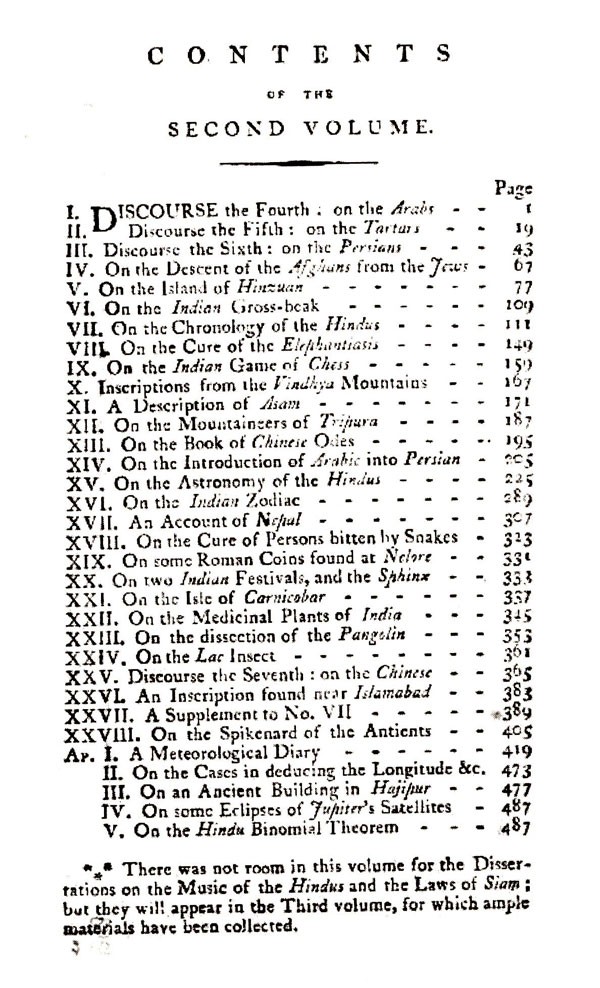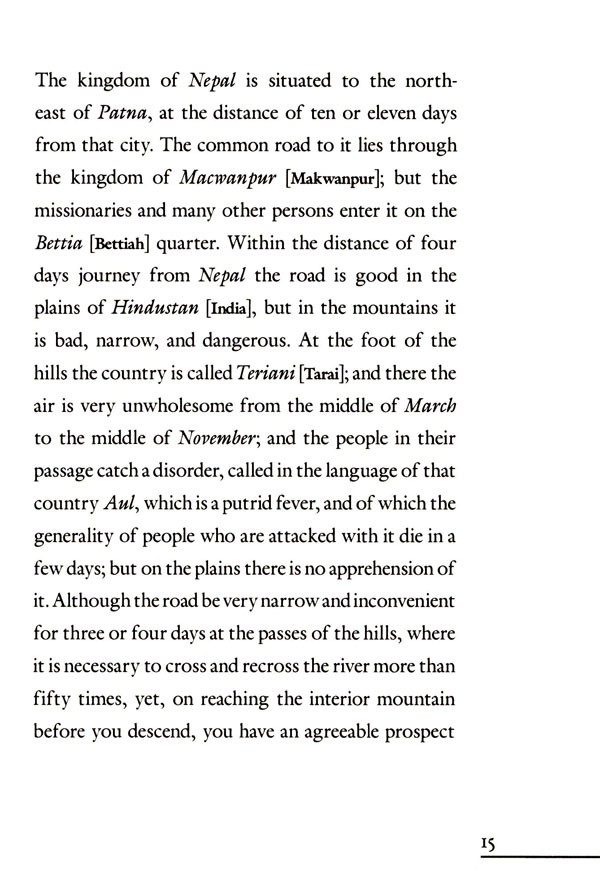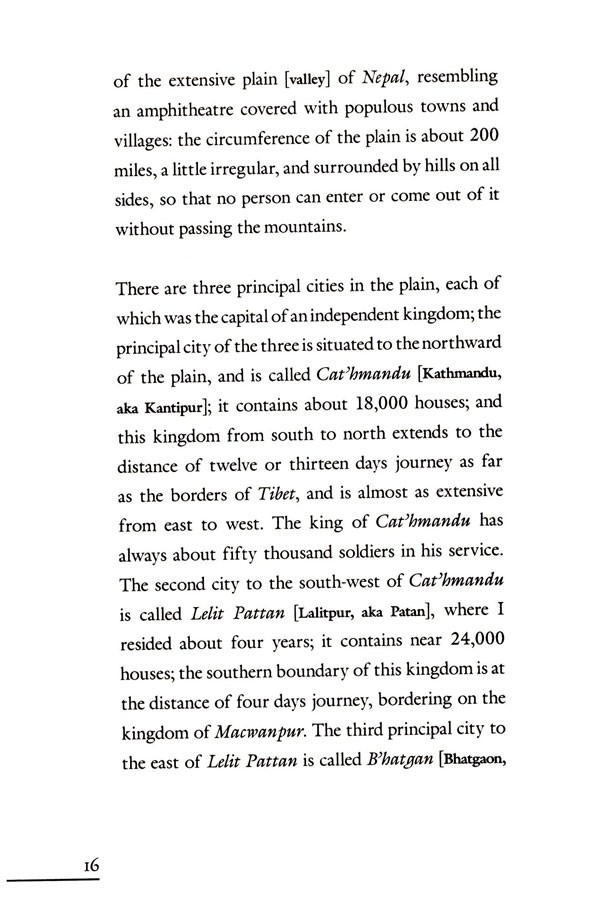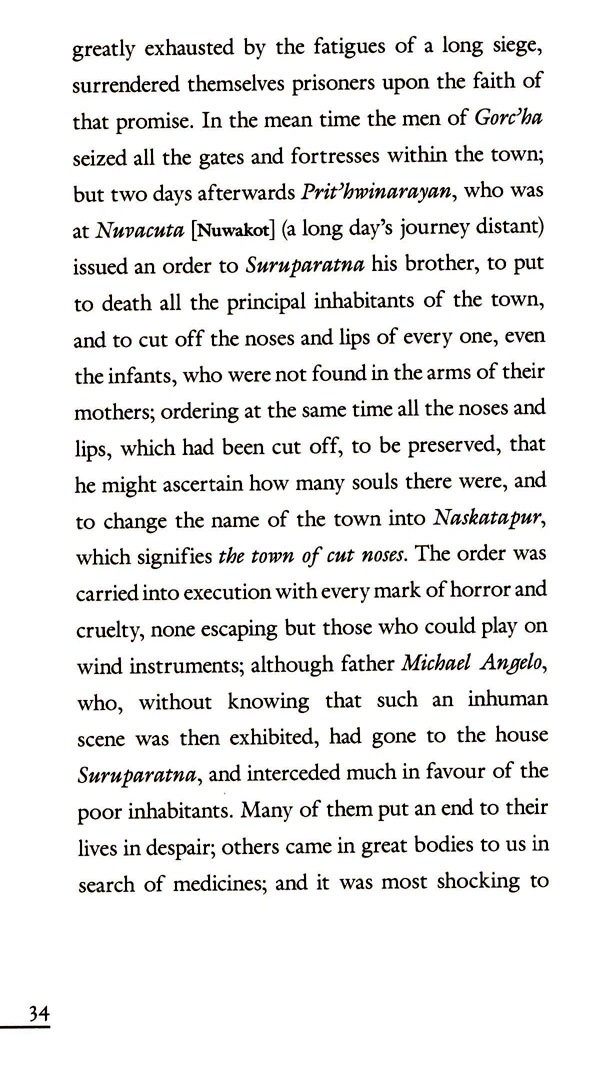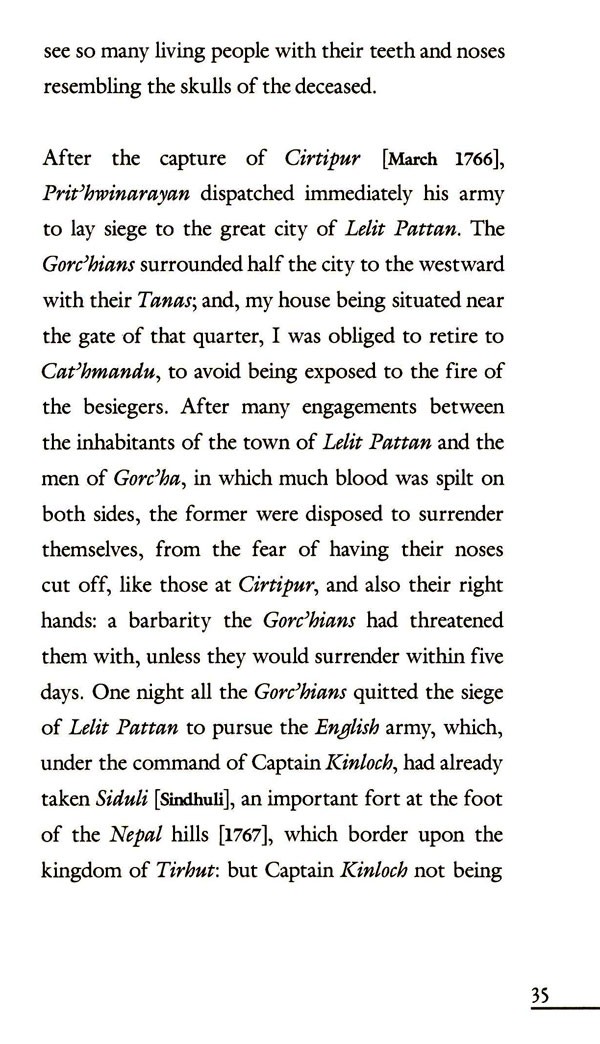
Account of The Kingdom of Nepal
Book Specification
| Item Code: | NBZ314 |
| Author: | Father Giuseppe |
| Publisher: | Ratna Pustak Bhandar, Nepal |
| Language: | English |
| Edition: | 2020 |
| ISBN: | 9789937332439 |
| Pages: | 40 |
| Cover: | PAPERBACK |
| Other Details | 8.50 X 5.50 inch |
| Weight | 60 gm |
Book Description
This book is a first-person 'Account' relating key events that led to the fall of the Malla kings and the rise to power of Prithhvinarayan Shah, the ambitious king of Gorkha. It highlights the Gorkhali's invasion, including the dramatic capture of Kirtipur, followed by defeats of valley's three kingdoms.
Giuseppe provides a necessary perspective on the substance of the narrative that follows, a striking, first-hand chronicle of events that changed the course of Nepalese history.
Eye-witness to History
There comes a time in nation's history when scholarly viewpoints on specific happenings may well be overshadowed by a singular eye-witness account.
A case in point is Father Giuseppe's first-person Account of the Kingdom of Nepal, relating key events that led to the fall of the Malla kings of the Nepal Valley and the rise to power of Prithvinarayan Shah, the ambitious king of Gorkha and great unifier of Nepal. Giuseppe's brief, 6000-word report on what he observed during the final phase of the Gorkhali conquest of the Valley (1764-69 AD) is so clear, in sufficient detail and without bias, that it is now recognized, over two centuries on, as an invaluable source, unique and historical in its own right.
Father Giuseppe and Capuchin Mission to Nepal
Fr. Giuseppe of Rovato (a town in northern Italy) was a member of the Catholic mendicant order of Capuchins, a reformed offshoot of the Franciscans. The bearded Capuchin friars were recognized by their brown robes and pointed cowls (hoods, capuche or cappuccino in Italian). The first Capuchin friars in Nepal arrived in 1707 on their way to establish a mission in Tibet. A small outpost was also opened in the Nepal Valley astride the arduous overland trade route and supply line to Lhasa. It functioned as a welcome rest stop for missionaries trekking to or from Tibet and India. Maintaining the Tibet Mission was a struggle, and it was closed after 38 years, in 1745. After that, the Nepali Mission continued on its own until early 1769, during the last phase of Prithvinarayan Shah's conquest of the Valley. Both of these far-flung undertakings suffered from poor communications with their counterparts in India and superiors in Rome, and from perpetually inadequate funding and supply of clerics to maintain them.
**Contents and Sample Pages**
